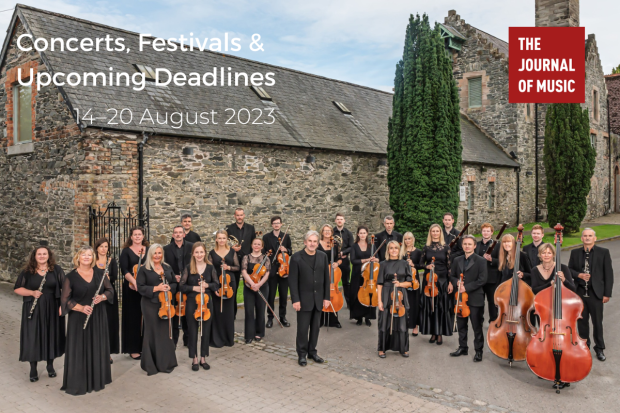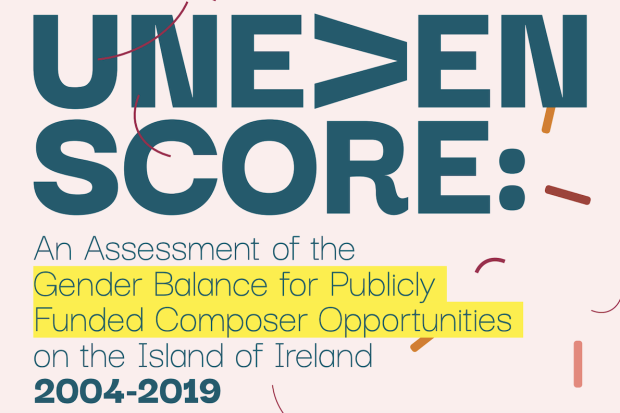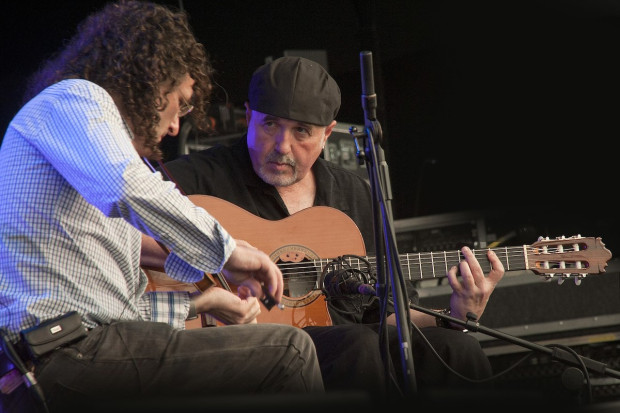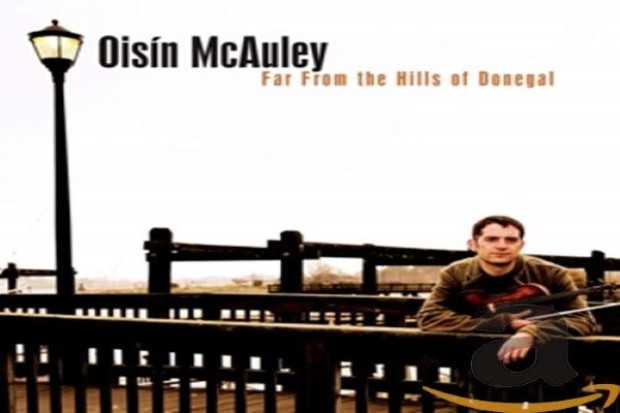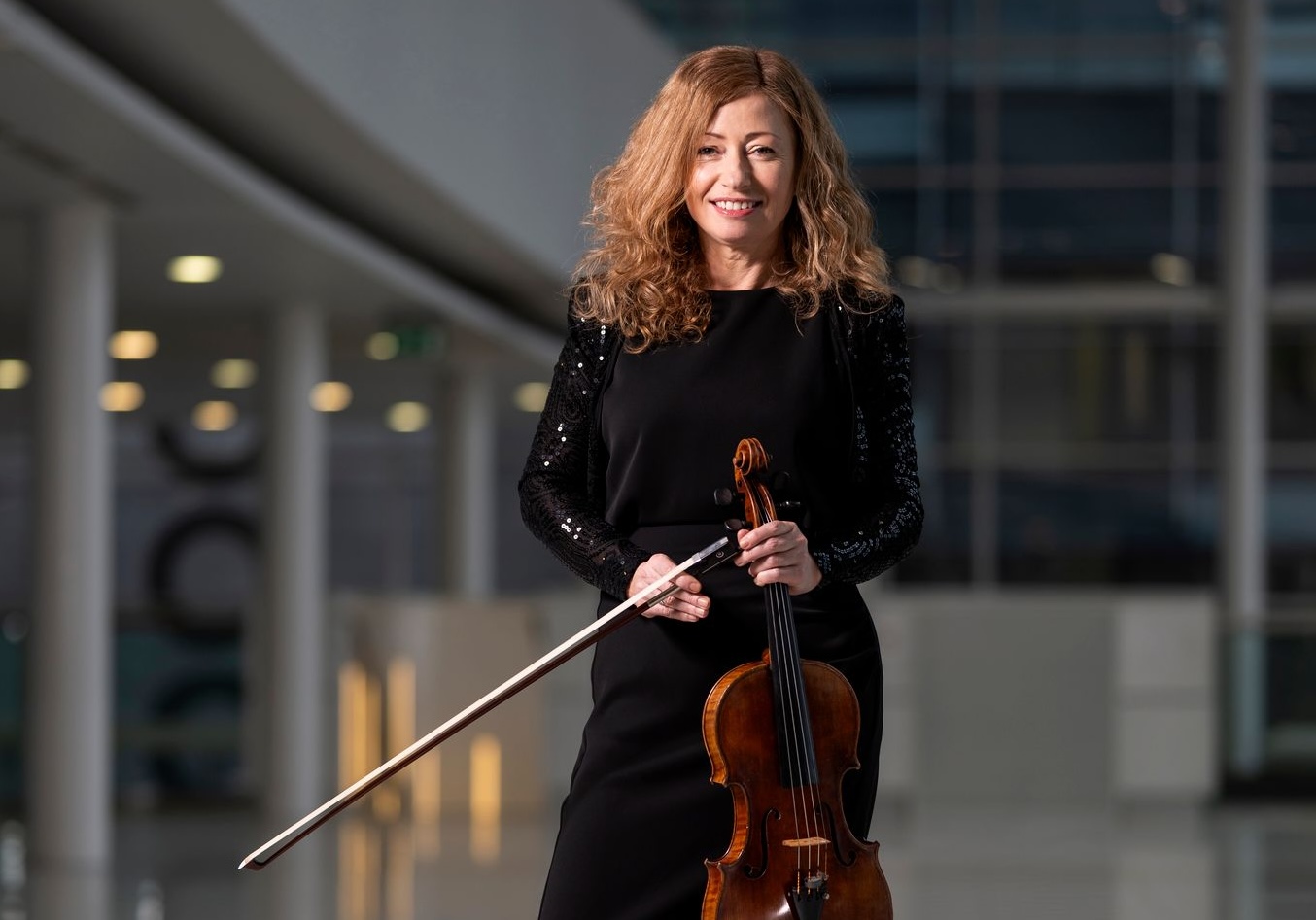
Róisín Ní Dhúill, presenter of 'Irish Classical – Hidden in Plain Sight' on BBC Radio 3 (Photo: BBC)
Irish Classical Not So Hidden Anymore
The past three weekends have seen a documentary series on BBC Radio 3 exploring the history of Irish classical music. Presented by Róisín Ní Dhúill, the Cork-native viola player with the BBC Philharmonic Orchestra, the series, titled Irish Classical – Hidden in Plain Sight, follows both music written by Irish composers abroad and by composers living in Ireland across three centuries.
John Field is easy to acknowledge as the earliest widely known Irish composer, and so it’s unsurprising that the series begins with his music, specifically Nocturne No. 5 in B-flat major. The three episodes follow a loose chronology, with the first exploring the Classical and Romantic eras, and the general convention of Irish musicians to find success abroad during this time. Here there’s a number of lighter songs, such as Thomas Moore’s ‘The Minstrel Boy’, Michael William Balfe’s ‘I Dreamt I Dwelt in Marble Halls’, Charles Villiers Stanford’s ‘I Love My Ould Ireland’. These are counterbalanced by some more complex works, including movements from George Alexander Osborne’s third piano trio and Stanford’s ‘Irish’ symphony. Stanford is the only composer featured twice, though since this year is the centenary of his death his music may be due a deeper exploration.
Episode two begins with a trio of twentieth-century female composers: Ina Boyle, Joan Trimble, and Alicia Adélaide Needham. Needham’s piece – The Fairy’s Lullaby for flute and harp – is dainty and rather lightweight but this composer, it seems, was formidable: a committed suffragette and the first woman to conduct at the Royal Albert Hall. Recordings of her music are rare (this was the first I’ve heard), but it was her biography as much as this small piece that left me curious about what else she composed.
The second episode of Irish Classical seems to stand on the firmest ground thematically. Its focus is the early-to-mid-twentieth century, and how, as Ireland gained its independence, its music also gained a clearer identity, beyond the sentimental songs of Balfe and Stanford. Here of course we find Ó Riada’s Mise Éire, probably the clearest landmark in the development of Irish classical music, as well as Mícheál Ó Súilleabháin’s enduringly-popular Woodbrook. We also see works by composers who adopted Ireland as their home, including E.J. Moeran and Arnold Bax.
Episode two concludes with the only piece to be played twice in the series: Ailbhe McDonagh’s Skellig, a work for cello and piano that dates from 2019. I found myself wondering whether this choice had been made to invite dissonance-shy listeners not to skip the third part. McDonagh has an ear for cool, pop-influenced harmony that’s easy on the ear but still interesting, and I think Skellig was chosen to show the broad range of styles that would feature in episode three.
Broad range
Though it’s true of the whole series, episode three is the episode in which the documentary’s nature as a tasting platter is clearest. It’s got the broadest range of music; at one point we move from Raymond Deane’s spare, darting Nachtfalter for piano to Roger Doyle’s glimmering Temwani, to Martin Hayes’ playing of the reel ‘Maghera Mountain’ with the Brooklyn Rider string quartet, to Eímear Noone’s score for the game World of Warcraft.
Given this fact, it’s very appropriate that the episode ends with an extract from Jennifer Walshe’s terrific piano piece, Becher, in which the music jumps from one piece to another, usually lingering long enough for the moment of recognition to hit before jumping to the next.
With such a broad array of music (even still a very limited selection of living Irish composers) this sort of compiled exploration is inevitably a little thin. The works chosen are usually the composer’s most famous, and particularly in the last part the commitment to a diversity of styles means no style can be more than just sampled. But though the programme may tread lightly on the surface, it invites you to go deeper in whatever directions you choose. And it’s to Ní Dhúill’s credit that, although any collection like this necessitates editorial choice, the music is selected in a way that seeks to avoid stylistic bias.
There is also a conscious effort to select Irish performances of these works, with the series featuring names such as John O’Conor, Hugh Tinney, the Fidelio Trio, and the RTÉ Concert Orchestra.
At the start of episode one, Ní Dhúill suggests her mission in making the series: ‘investigating if there is such a thing as an Irish classical tradition.’ There are very few attempts, though, at providing a definition of an Irish sound that may be distinct from other parts of the European or classical traditions, barring a couple of references to traditional music – some more convincing than others. There’s no question, for example, that Charles Villiers Stanford ‘assimilates the rhythms and contours of Irish melody’, but a comparison between John Field’s nocturnes and the sean-nós style feels like rather a stretch.
But let’s be honest: an ‘investigation’ as part of a documentary like this starts with the conclusion, and it’s the shape it makes that’s more interesting anyway. In any event, I suspect that the real mission is to expand the awareness of these composers. In that, as I look over the list of featured composers whose work I’ll be exploring further, I think she’s been successful.
Just about any of the composers featured (indeed, any number of Irish composers who didn’t make the cut) could alone easily provide ample material for an hour-long radio documentary. Such a service to Irish composition is beyond the remit of the BBC – but as one Irish composer asked on social media, ’does [RTÉ] Lyric FM do this kind of thing?’ It’s certainly not beyond their remit. Of course, the Irish classical station likely features more music by Irish composers than any other radio station in the world and that work shouldn’t be lightly overlooked. But this sort of substantial, well-publicised and celebratory series is of a sort that it would be wonderful to see grown at home, and maybe even given more room to breathe. Ní Dhúill and the BBC have done well here in showing the breadth of history in Irish classical music, but the waters run deeper.
To listen to Irish Classical – Hidden in Plain Sight, presented by Róisín Ní Dhúill and produced by Olive Clancy, visit https://www.bbc.co.uk/programmes/m001v1mz.
Published on 25 January 2024
Brendan Finan is a teacher and writer. Visit www.brendanfinan.net.










